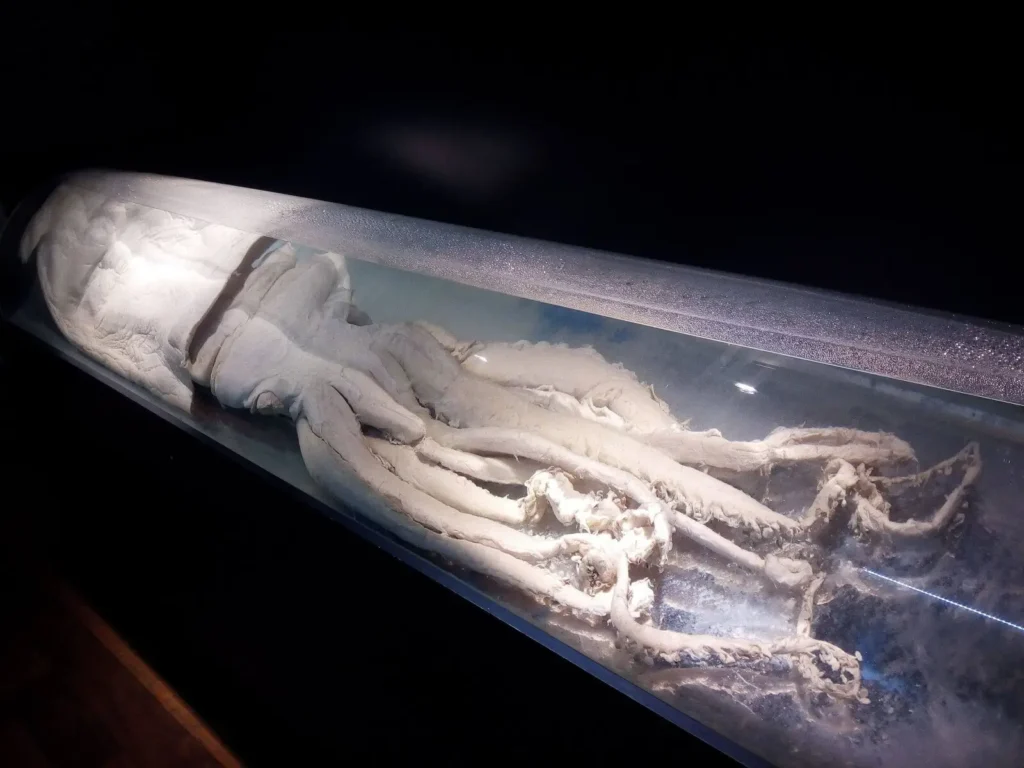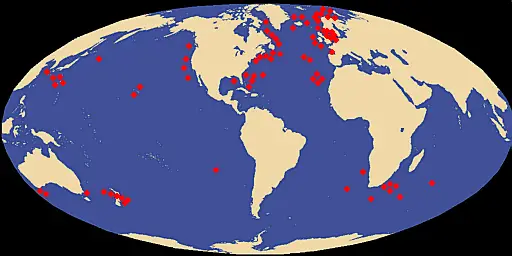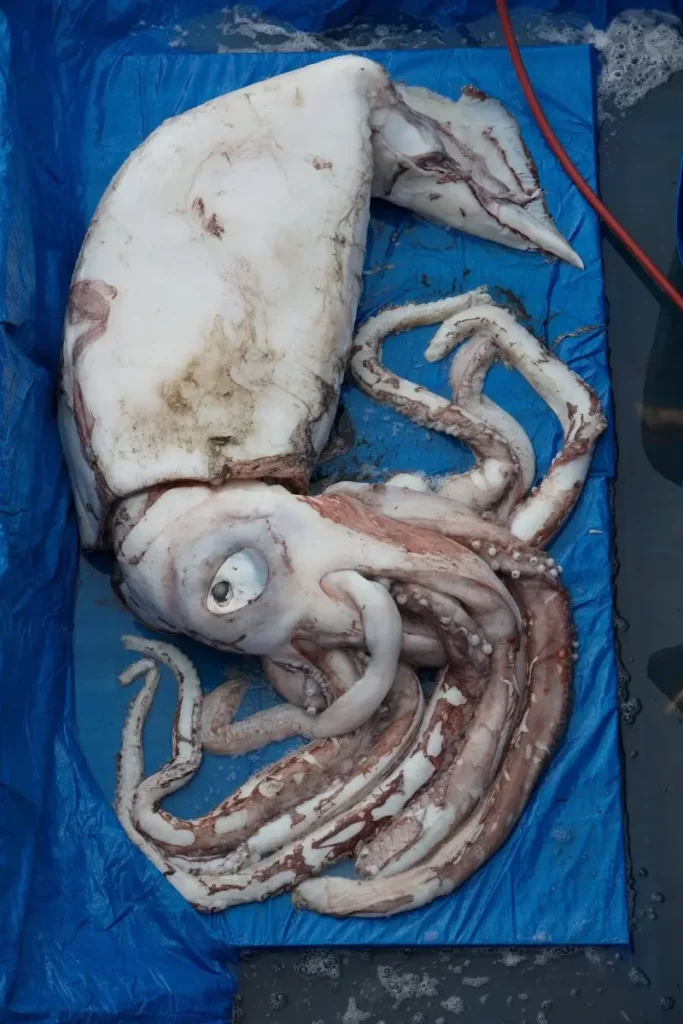Architeuthis dux is one of the most impressive and mysterious inhabitants of the ocean depths. This giant squid is one of the largest invertebrates in the world, having long remained almost elusive to science. Due to its incredible size and ability to live at great depths, the archaeotis has become a symbol of marine mysteries and a real inspiration for myths about sea monsters.

Classification
• Kingdom: Animals (Animalia)
- Type: Mollusca
- Class: Cephalopoda
- Family: Squid (Teuthida)
- Family: Architeuthidae
- Genus: Architeuthis
- Species: Giant Architeuthis (Architeuthis dux)
Appearance
📏 Sizes
- Body length: up to 13 m (some sources report individuals up to 18 m)
- Weight: up to 275 kg
🎨 Description
- Elongated, muscular body, typical of squid
- Eight shorter arms and two long catching tentacles with suction cups
- Large eyes - one of the largest in the animal kingdom, up to 30 cm in diameter
- Reddish pink or grayish color
- They have a beak-like mouth capable of tearing prey apart

Range and habitat
🌍 Area
- Deep water areas of all oceans, especially the Atlantic and Pacific
- Most often occurs off New Zealand, Japan, and the North Atlantic
🌊 Living environment
- Depths from 300 to 1000 meters, sometimes up to 2000 meters
- They lead a secretive lifestyle, avoid the surface
- May rise closer to the surface at night in search of food
Environmental role
- Architeuthis are an important part of the deep sea food chain
- They are prey for deep-sea whales, including sperm whales
- They hunt fish, other squid and crustaceans themselves

Behavior
👥 Social structure
- Individualists leading a lonely lifestyle
- Do not form groups or flocks
🌗 Activity
- Most active at night, which allows them to stay safe and hunt in the dark
- Use jet propulsion to move quickly
🦶 Communication and protection
- Can change body color for camouflage
- Protect yourself by ejecting ink liquid
- Avoid clashes with large predators, but sometimes fight with sperm whales

Food
🍃 Food.
- The diet consists of deep-sea fish, shrimp, squid
- Ambush hunting, using long tentacles to capture prey
- Food is crushed with the beak and digested in the muscular stomach
Reproduction
💞 Mating
- Mating occurs at great depths
- The male transfers spermatophores (sperm packets) to the female using a special tentacle
🐣 Birth and development
- The female lays up to several thousand eggs
- Eggs attach to the bottom or float in the water column
- Young squids are very small and go through several stages of development
- Maturity occurs in several years, the exact life expectancy is unknown (probably 3-5 years)
Natural enemies
🐋 The main predators
- Sperm whales are the main natural enemies
- They can also become victims of large sharks
Threats to livelihoods
🔻 Main threats
- Ocean pollution, especially with microplastics
- Deep-sea fishing, which can accidentally kill young fish
- Lack of knowledge about biology makes effective protection difficult
Population and conservation status
📉 Current status
- The exact number is unknown due to difficulties in monitoring
- The species is not considered to be under immediate threat
🟢 IUCN: Data Deficient
📜 Archaeotypes do not have a special protection status, but the interest of scientists is growing
Interesting facts
✔️ The eyes of the Architeuthis can reach the size of a soccer ball
✔️ The legends of the "kraken" could have arisen precisely because of meetings with the Architeuthys
✔️ Parts of Archaeotis tentacles have often been found in the stomachs of sperm whales, indicating that they fought in deep water
Conclusion
The Architeuthis is one of the most impressive representatives of marine fauna, which still hides many secrets. Its gigantic size, mysterious lifestyle, and rare encounters with humans make it an object of constant scientific interest. Studying these creatures allows us not only to learn more about ocean biodiversity, but also to better understand deep-sea ecosystems, the preservation of which is an important component of protecting our planet.